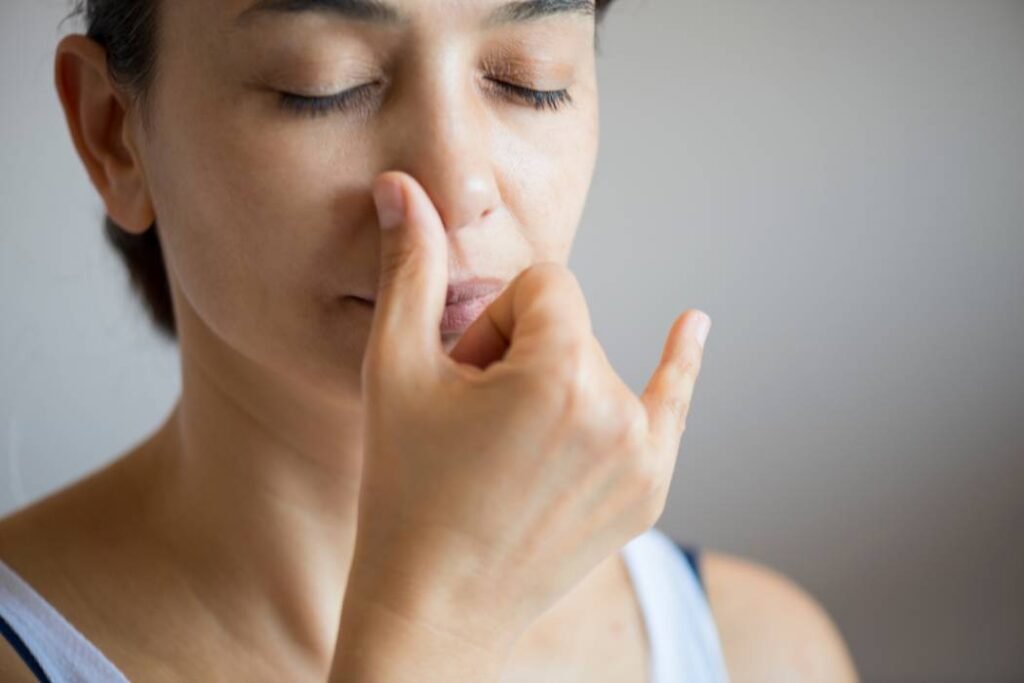The term “Pranayama” comprises two common Sanskirt words of yoga “Prana” and “Ayama”. Prana is the life driving force behind all living beings, present in humans in the form of Vayu or winds. It regulates all physical functions, for example, the breath, the supply of oxygen, digestion, elimination and much more. And “Ayama” means to control or expand.

- Prana – Responsible for inspiration and swallowing food
- Apana – Responsible for elimination, outward movement
- Samana – Responsible for assimilation
- Vyana – Responsible for metabolizing, speech, physical growth
- Udana – Responsible for circulation
Benefits of Pranayama (Yoga Breathing)
1. Increases Lung Capacity
Regular pranayama practice directly affects the lungs. It strengthens the respiratory muscles and expands the chest wall. Fast breathing exercises like kapalbhati and bhastrika enable the respiratory muscles to rapidly expand and contract, enhancing lung function.
Pranayama facilitates deep breathing by assisting the lungs in expelling built-up stale air, increasing oxygen levels, and activating the diaphragm. It causes the chest wall to expand further, allowing the lungs to expand and contract to their utmost capacity.
2. Act as a Stress Reliever
By modifying erratic breathing patterns, pranayama can greatly alleviate stress.
Typically, when we are under stress, we breathe shallowly or clavicularly by lifting our shoulders and collarbone. The diaphragm becomes actively involved in breathing in and out of the lungs when practicing deep or slow pranayama breathing.
Yoga’s deep pranayama breathing exercises cause your sympathetic nervous system, which triggers the stress response, to become quiet, which immediately makes you feel less stressed and anxious. Additionally, pranayama increases the amount of oxygen that enters your body and brain, which helps to reduce stress and enhance the functioning of vital organs.
3. Improves Concentration
One of the best yoga poses for improving memory and attention is pranayama breathing. Its mindfulness meditation technique trains the mind to be in the present moment by concentrating on breathing in various manners and patterns. Additionally, it fosters mindfulness.
The cerebral cortex and other major brain regions that are important for attention, awareness, thought, and consciousness are stimulated by pranayama practice. A 2017 study published in the Journal of Neurophysiology demonstrates that when we focus on our breathing, brain areas related to emotion, attention, and bodily awareness are activated.
4. Boosts Immune System
An all-encompassing yoga technique to strengthen the immune system is pranayama. It includes exercises for diaphragmatic breathing that use the entire digestive system, which is where roughly 80% of immunological tissue is found. Thus, deep pranayama breathing exercises can enhance the body’s immunological response.
When we are stressed, our immune system’s capacity to defend us against poisons and infections is diminished. By successfully reducing stress, pranayama strengthens the immune system. The parasympathetic, or “rest and digest,” nervous system is activated when we practice pranayama, which involves lengthening each breath to increase the amount of oxygen in our blood.
5. Promotes Better Sleep
Pranayama breathing stimulates the parasympathetic nerve system, which lowers heart rate. It has a calming impact on the body and mind, promoting better sleep in turn.
A study found that practicing slow breathing exercises before bed helps the body and mind get a better night’s sleep. The heart rate and blood pressure are immediately reduced. Additionally, it aids in clearing the mind of any negative professional stress, worry, or emotional blockages that can prevent usfrom falling asleep on time.
6. Improves Brain Functions
Combining the practice of pranayama with yoga asanas and meditation results in an increase in overall brain wave activity, amygdala grey matter volume, and frontal cortex activation. Additionally, it helps with memory, which has been linked in a research to student academic success.
Practice of pranayama or breath control improves the brain’s ability to filter information. Additionally, it filters the undesired hazardous substances that we frequently breathe in from the contaminated environment and enhances the passage of nanoparticles through the Blood-Brain Barrier to the brain.

